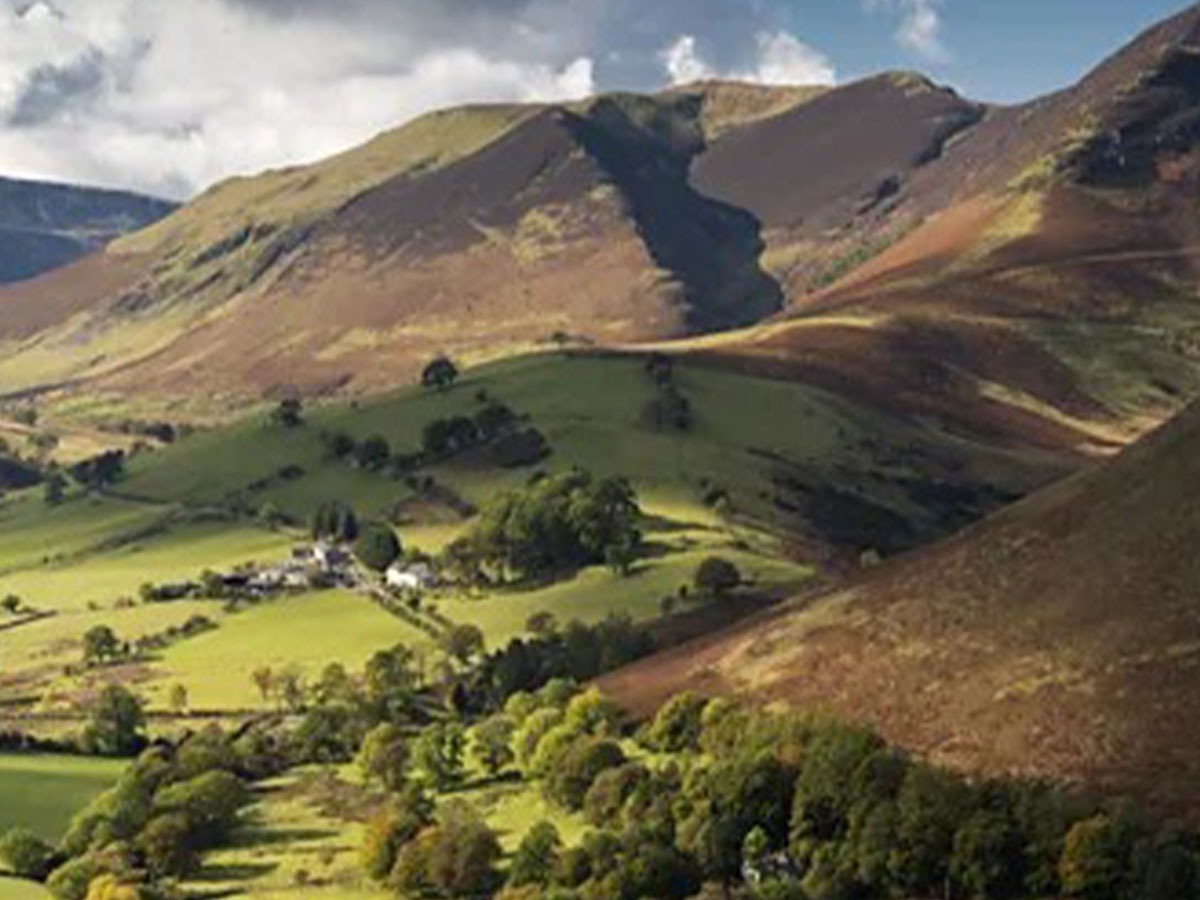
The Five Most Beautiful National Parks in the UK
For a small country, the United Kingdom packs a hefty punch when it comes to the diversity and beauty of its landscapes.
For proof, you only need to look at the 15 national parks found across England, Scotland, and Wales (there are no national parks currently in Northern Ireland), which change dramatically from the towering peaks of the Cairngorms to the sprawling waterways of the Broads, from the gently rolling South Downs to the broad beaches of the Pembrokeshire coast.
This year marks the 75th anniversary of the National Parks and Access to the Countryside Act 1949, which led to the creation of the UK’s national parks, starting with the Peak District in 1951. The visionary legislation secured access for all to open countryside while also serving to protect precious wildlife and places of immense natural beauty.
A concept imported from the United States (Yellowstone, established in 1872, was the world’s first national park), the UK’s national parks were “the culmination of political battles that had been fought for decades,” says Carey Davies, hiker, naturalist, and author of the new book *National Parks of the United Kingdom* (Ithaka Press). “The Industrial Revolution made the British the world’s first predominantly urban population. It’s vital that people have breathing spaces and retain our connections to the land. But the idea that nature is good for people and that people needed access to the countryside was particularly pronounced after the UK had been through the horrors of World War Two. There was an exhausted population. Britain can feel like a crowded place in our cities, but national parks can be oases of calm and space.”
Today, the UK’s national parks are popular, highly valued places to unwind, hike, climb, cycle, and paddle. “They’re also refuges for rare wildlife, plants, and distinctive habitats, and they have a vital role to play in addressing some of the most pressing challenges our country faces, such as biodiversity loss, climate change, and wellbeing,” says Davies. “We need our national parks now more than ever.”
Here, Davies selects the UK’s five most beautiful national parks, perfect places for adrenaline-rush adventures, wonderful wildlife, and soul-restoring peace and contemplation.
1. Lake District National Park, England
It’s the “relationship between the sublime and the cosy” that draws millions of people to northern England’s Lake District every year, suggests Davies. The UK’s most visited park, designated a UNESCO World Heritage site in 2017, the Lake District has hulking mountains and glacially carved lakes that sit alongside human-altered landscapes including patchworks of dry stone-walled fields and sheep farms. “Sheep farming is part of the park’s heritage and history,” says Davies. “It’s been there since the Vikings,” though he acknowledges criticism from environmentalists that over-farming has been bad for nature in the park.
The Lake District has inspired writers from William Wordsworth to Beatrix Potter. “We think of mountains as inspiring, rejuvenating places rather than hostile wastelands, and that’s an influence from the Romantics,” says Davies. “People come from all over the world to the Lake District, where Beatrix Potter’s former house is, which is testament to how enduring her works are.”
Sedate boat cruises on lakes including Windermere, Ambleside, and Ullswater are the order of the day, though wild swimming and stand-up paddling are livelier, more up-close options. The park can get busy and congested, especially in summer, but at 2,362 square kilometers and with plenty of peaks that coach tours can’t reach, it’s possible to find seclusion and perhaps inspiration for your own poem or story.
2. Eryri (Snowdonia) National Park, Wales
In 2022, the Snowdonia National Park Authority committee voted to use the Welsh names Yr Wyddfa (Snowdon) and Eryri (Snowdonia) to refer to Wales’ highest mountain and the national park, rather than the English names – a move followed more recently with the changing of the Brecon Beacons to Bannau Brycheiniog.
This region of north-west Wales offers “spectacular dramatic mountain landscapes, which makes it a fantastic place for adventure: climbing, scrambling, and adventurous walking,” says Davies. “The natural architecture of the Snowdon massif, including Yr Wyddfa (Snowdon), the Glyderau, and Cader Idris, is often more jagged and angular than the Lake District. The rock erodes into incredible formations, such as Castell y Gwynt.”
But Eryri isn’t just about rock – there are also temperate rainforests, known as Celtic rainforests, and Arctic alpine plants such as alpine meadow-grass.
“The human dimension is also part of the area’s beauty, such as Harlech Castle, perched on hills near the Snowdonia coast,” adds Davies. Writers have found inspiration here, too. “There’s a collection of 11 medieval Welsh stories called *The Mabinogion*. A lot of landmarks mentioned in it are in Eryri, so you can read the stories and then go to the places mentioned,” Davies says. “There’s also a popular legend that if you sleep on Cader Idris, you’ll wake up as a poet or a madman. Literature and myths form a beautiful part of this national park’s landscapes.”
3. Cairngorms National Park, Scotland
As the largest national park in the UK, the Cairngorms is a vast wilderness of mountains, forests, rivers, and lochs. “It’s a place of superlatives,” says Davies. “It has the highest mountain range in the UK, the largest native forests, and four of the five highest peaks in Scotland.”
The Cairngorms is home to a range of rare and endangered species, including red squirrels, golden eagles, and Scottish wildcats. The park’s landscapes vary dramatically, from the high plateaus and deep corries of the Cairngorm Mountains to the ancient Caledonian pine forests and the lush Spey Valley.
The park offers numerous opportunities for outdoor activities, including hiking, skiing, mountain biking, and wildlife watching. “It’s a place where you can really experience the wild and raw beauty of Scotland,” says Davies.
4. Pembrokeshire Coast National Park, Wales
This coastal national park is renowned for its stunning cliffs, sandy beaches, and rich wildlife. “The Pembrokeshire Coast is one of the most dramatic and varied coastlines in the UK,” says Davies. “It’s a paradise for walkers, with the 299-kilometer Pembrokeshire Coast Path offering breathtaking views and the chance to spot seals, dolphins, and seabirds.”
The park also encompasses a range of habitats, from rugged cliffs and sandy beaches to wooded valleys and rolling farmland. The coastal waters are home to a variety of marine life, including porpoises, basking sharks, and a colony of puffins on Skomer Island.
“Pembrokeshire is also rich in history, with prehistoric tombs, Iron Age forts, and medieval castles dotting the landscape,” adds Davies. “It’s a place where you can combine outdoor adventure with a journey through time.”
5. South Downs National Park, England
Stretching across the counties of Hampshire and Sussex, the South Downs National Park is known for its rolling chalk hills, ancient woodlands, and picturesque villages. “It’s a landscape that has inspired artists and writers for centuries,” says Davies. “The South Downs offer a gentler beauty compared to the dramatic peaks and crags of other parks, but it’s no less captivating.”
The park is crisscrossed by numerous trails, including the 160-kilometer South Downs Way, which offers stunning views of the countryside and the English Channel. “It’s a great place for walking, cycling, and horse riding,” says Davies. “The chalk grasslands are rich in wildflowers and butterflies, and the woodlands are home to a variety of wildlife, including deer and badgers.”
The South Downs are also dotted with charming villages and historic sites, such as the medieval Arundel Castle and the Roman villa at Fishbourne. “It’s a place where you can enjoy the beauty of the English countryside and explore its rich history,” says Davies.








